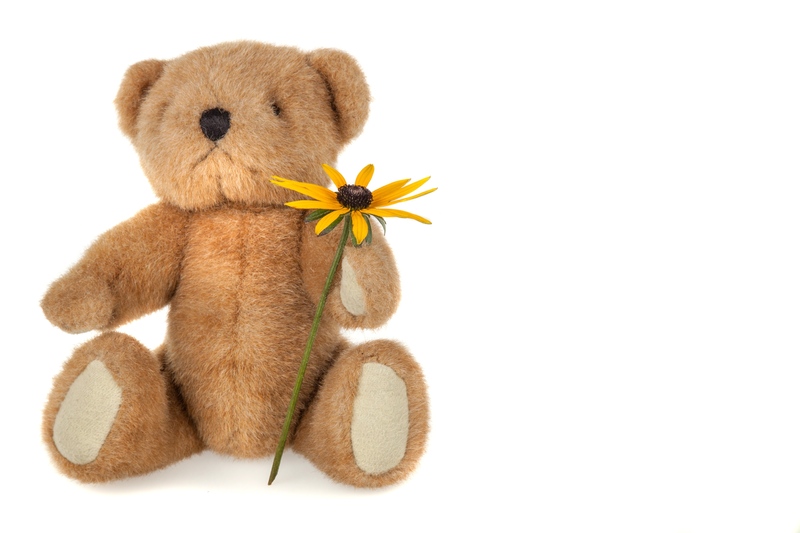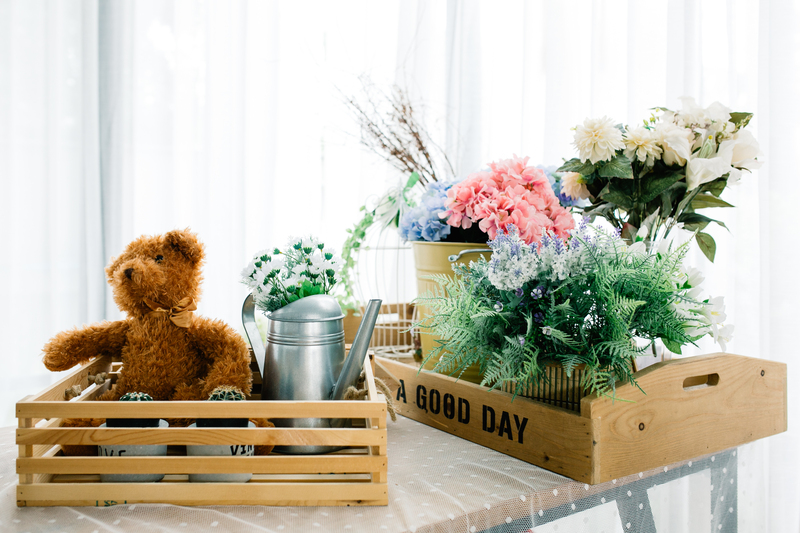Reduce Waste and Spark Creativity by Turning Rubbish into Riveting Decor
Are you looking for innovative ways to reduce waste at home and infuse your living space with creative flair? Imagine a sustainable lifestyle where everyday rubbish is ingeniously transformed into eye-catching, functional decor, instead of ending up in landfill. In this comprehensive guide, we'll delve into the art of turning rubbish into riveting decor, offering ideas, tips, and step-by-step advice to help you reduce waste, nurture creativity, and design a home that's truly one-of-a-kind.
Why Transform Rubbish into Home Decor?
Reducing waste isn't just a trend--it's an urgent, ongoing movement with global significance. According to the United Nations, over 2 billion tonnes of waste are generated worldwide each year. Most of this ends up in landfill, polluting our environment and depleting precious resources. By upcycling rubbish into decorative items, you can help minimize clutter, save money, and make creative statements--all while going green.
- Eco-Friendly Benefits: Every item you divert from the trash reduces your carbon footprint.
- Personalized Style: Repurposing waste allows you to create custom, meaningful home decor that tells your story.
- Financial Savings: DIY decor with rubbish is budget-friendly and often free.
- Creative Growth: Thinking outside the box and crafting unique decor sparks creativity and problem-solving skills.

The Core Principles of Upcycled Decor
Creating riveting decor from rubbish is more than a whimsical hobby--it's rooted in the principles of upcycling, which is about increasing an object's value by creatively reusing it. Here's what underpins this sustainable art form:
- Reimagination: Spot potential in everyday waste, from tin cans and bottles to old clothes and pallets.
- Functionality: Ensure that the new decor is both beautiful and practical.
- Durability: Use techniques and materials that make your creations last.
- Aesthetics: Choose shapes, colors, and textures that align with your decorating style.
How to Kickstart Your Waste-Reducing Decor Journey
1. Take Inventory of Your Rubbish
Start by collecting and sorting your waste. Look for items like glass bottles, tin cans, cardboard boxes, fabric scraps, plastic containers, wood pallets, and paper rolls. Set aside anything that has interesting shapes, colors, or textures. Remember, safety first--thoroughly clean and dry all items before use!
2. Get Inspired
Find inspiration in magazines, websites, social media, or local upcycling communities. Consider how others have turned trash into riveting recycled decor--from bottle chandeliers to pallet coffee tables. Browse online platforms like Pinterest and Instagram to spark creativity.
3. Gather Your Tools
To turn rubbish into decorative items, you'll need a basic crafting toolkit. Must-haves include:
- Glue gun and craft glue
- Scissors and box cutter
- Paints and paintbrushes
- Nails, screws, and a hammer
- Sandpaper
- Needle and thread (for fabrics)
Popular Upcycled Decor Projects
Let's dive into some inspiring, practical ideas for turning waste into decorative masterpieces. These projects range from easy to advanced, so there's something for everyone.
Glass Jar Lanterns and Vases
Save empty glass jars from jams, sauces, or pickles. With a bit of paint, twine, and imagination, you can create gorgeous lanterns or rustic vases. Fill them with fairy lights, sand, colored water, or dried flowers.
- What you need: Clean glass jars, acrylic paint, brushes, twine, tea lights.
- Decorative twist: Try wrapping jars in lace or burlap for a vintage look.
Cardboard Wall Art
Cardboard is one of the most versatile materials for DIY waste-to-decor crafting. Cut old boxes into geometric shapes, create layered wall art, or construct lightweight photo frames. Decorate with paints, markers, or fabric offcuts.
- Tip: Layer different textures and colors for a three-dimensional, eye-catching piece.
Pallet Furniture and Shelves
Discarded wooden pallets are often available for free from grocery stores or warehouses. With some simple carpentry, you can make coffee tables, bookshelves, or outdoor benches. Stain or paint them to match your home's color scheme.
- Safety consideration: Check that the pallet is heat-treated and free from toxic chemicals before bringing it indoors.
Plastic Bottle Planters
Plastic bottles, otherwise destined for the landfill, can be repurposed into striking plant holders. Cut the bottles in creative ways, decorate them, and use them for succulents or herbs--they add a pop of eco-conscious charm to window sills and balconies.
- Creative idea: Paint bottles in bright colors and hang them in groups for vertical gardens.
Tin Can Organizers
Tin cans can be transformed into chic desk organizers, utensil holders, or even small hanging planters. Paint, cover them with rope or fabric, and stack to make multi-level organizers for all your bits and bobs.
- For extra flair, glue decorative knobs to the top of cans and turn them into mini storage boxes.
Fabric Scrap Cushions
Turn old t-shirts, jeans, or bedding into patchwork cushions, poufs, or throw pillow covers. Sew or glue fabric scraps together for a colorful, upmarket bohemian look.
- No-sew option: Use fabric glue or tie knots for simple, durable cushion covers.
Wine Cork Notice Boards
Don't toss those wine corks! Collect them and hot glue them to a wooden board to create a quirky, practical notice board for your kitchen or office. Arrange the corks in a chevron or herringbone pattern for added visual interest.
Tips for Success When Turning Rubbish into Decor
- Plan ahead: Think about your project's function and where it will go in your home before you start.
- Clean thoroughly: Wash all materials to remove residue, labels, and odors.
- Test combinations: Mix and match different items for striking contrasts--glass with wood, fabric with metal, etc.
- Involve everyone: Upcycling rubbish into decor is a great family activity, getting kids involved in sustainability and creative thinking.
- Document your creations: Take before-and-after photos to celebrate your eco-friendly artistry and inspire others.
Decorating Styles That Embrace Upcycled Waste
You don't need to sacrifice style for sustainability. In fact, many interior decorating trends are ideal for showcasing decor made from rubbish:
- Boho-Chic: Eclectic, colorful, and texture-rich bohemian spaces are perfect for upcycled, handmade decor.
- Industrial: Exposed metals, pallets, and repurposed factory items turn waste into statement pieces.
- Minimalist: Clean lines and creative shelving made from old wood or metal blend form and function beautifully.
- Rustic Farmhouse: Upcycled wood signs, mason jars, and reclaimed textiles provide coziness and charm.
- Modern Eclectic: Mix and match upcycled art for a curated, gallery-inspired space.
Environmental Impact of Upcycling Household Rubbish
The practice of reducing waste by creating decor from rubbish benefits the planet in multiple ways:
- Less landfill accumulation and pollution
- Reduced demand for new resources and energy
- Minimized carbon emissions associated with manufacturing and transport
- Promotes circular economy and sustainable habits
By turning rubbish into useful decor, you directly help to conserve landfill space and reduce your household's environmental impact. Every small step matters!
Where to Find Materials for Upcycled Decor Projects
Don't limit yourself to what's in your recycling bin. Try sourcing additional "trash" materials from:
- Local recycling centers: Many offer free or low-cost materials for art projects.
- Garage sales and flea markets: Pick up old glassware, furniture, textiles, and more.
- Craigslist or Facebook Marketplace free sections: Look under "free stuff" for items you can repurpose.
- Community swap events: Exchange unused items with neighbors for fresh inspiration.
Showcase Your Creativity: Sharing and Selling Upcycled Decor
Your creative waste reduction projects have value beyond your home. Consider sharing or selling your upcycled decor:
- Social Media: Post photos and tutorials on Instagram, Pinterest, or TikTok to inspire others.
- Craft Fairs: Set up a booth at local markets to showcase (and sell) your creations.
- Online Shops: Platforms like Etsy or eBay are ideal for selling one-of-a-kind upcycled home decor.
- Local Galleries: Many community art centers support eco-artists and sustainable creators.
Addressing Challenges and Safety in Upcycled Decor
- Cleanliness: Thoroughly wash all rubbish before use, especially food containers.
- Stability: Ensure structures (like shelves or furniture) are safe and sturdy.
- Toxicity: Avoid using items like treated wood or plastics with BPA or unknown chemicals for indoor decor.
- Sharp edges: Sand or file down glass, metal, or hard plastic to prevent injuries.

How to Stay Motivated on Your Upcycling Journey
Upcycling can be a lifestyle shift, not just a one-time project. To keep your passion for turning rubbish into riveting decor alive:
- Set creative goals (monthly projects, themed decor, etc.)
- Join eco-friendly maker groups online or locally
- Stay updated on new upcycling techniques and trends
- Teach others or host DIY workshops--sharing knowledge is a motivator!
Conclusion: Rethink Rubbish, Revitalize Your Space
In a world striving for sustainability, reducing waste and sparking creativity by turning rubbish into riveting decor is more than a hobby--it's an act of positive change. Every upcycled project diverts waste from landfill, saves money, and gives your home a unique, personal touch. Whether you're crafting chic tin can organizers or transforming pallets into elegant furniture, your creativity and eco-conscious mindset can make a tangible difference.
Start today: gather your rubbish, dream up a project, and embark on a journey toward a greener, more imaginative home. Reduce waste and let creativity shine!